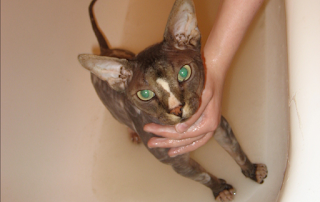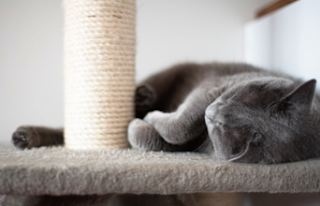Cat Breeds
The many
breeds of cats vary greatly in appearance.
Cat breeders have developed numerous breeds by selectively mating animals with certain desirable and distinctive characteristics. These characteristics appear consistently in the offspring of purebred cats. A purebred cat is one whose mother and father belong to the same breed. The offspring of cats that have mated randomly are known as crossbreds or alley cats.
Many people prefer the special features of a certain breed of cats. For example, such purebreds as the Abyssinian and the Birman are among the most beautiful and unusual animals in the world. But crossbreds may be just as beautiful and lovable as purebreds.
Certain associations officially recognize cat breeds and establish standards for the ideal characteristics of each breed. However, different cat associations recognize different breeds, and breed standards also vary somewhat. In the United States, cat breeds are commonly divided into two major groups: short-haired breeds and long-haired breeds.
Short haired breeds.
Most cat associations in the United States commonly recognize 10 short-haired breeds. They are the Abyssinian, American shorthair, Burmese, Havana brown, Japanese bobtail, Korat, Manx, Rex, Russian blue, and Siamese.
Abyssinian is a slender, muscular, medium-sized cat with a long, tapering tail. Aby cats, as they are sometimes called, have a rounded, wedge shaped head and large, pointed ears. Their almond-shaped eyes may be green or gold. These cats are known for their melodic voices and their agouti coat pattern, which is common in wild animals. Each hair of an Aby's soft coat has two or three bands of alternating light and dark colors. The coat may have red and chocolate bands, or reddish-brown and black or dark brown bands.
Abyssinians have been bred in Ethiopia (formerly called Abyssinia) for thousands of years. Many people believe the quiet, graceful Aby is descended directly from the sacred cats of ancient Egypt
American shorthair, also called the domestic shorthair, is the best known breed of cats. American shorthairs resemble many alley cats but are purebreds. The American shorthair is a muscular, medium to large sized animal. Its large head features full cheeks; a broad, squarish muzzle; large, round eyes, and rounded, medium-sized ears. The coat and eyes may be any color. The breed probably developed from cats originally brought to the American Colonies by Europeans. The British shorthair is similar to the American shorthair but is stockier and has a thicker coat.
Breed Organizations
Recognition and acceptance of a breed usually must come from an established group of cat fanciers. Groups of breeders and other persons interested in showing cats have formed organizations to establish rules for shows and standards by which cats can be judged at the shows. They also keep stud books and validate the registration papers needed for purebred cats. In most countries there is only one organization that acts as the governing body.
In the United States, there are many, each of which sets its own judging standards and rules. The two largest of these are the Cat Fanciers' Association, Inc., and the American Cat Fanciers Association. In Canada the governing body is the Canadian Cat Association.
In most parts of the United States there are many organizations to which persons interested in cats may belong. Some of these are affiliated with national associations, but many arc strictly local clubs that invite the participation of anyone in the neighborhood. Membership in the large clubs usually consists chiefly of breeders and owners of purebred cats. Such organizations serve as clearinghouses for disseminating information about specific breeds, giving members’ advice about breeding methods, and helping establish standards for breeds.
Most of the organizations conduct shows in which competitions for champion ships are held. Cat fanciers take their animals to vie with others in their breed or class for top honors. No purebred cats may also be shown in the household-pet class. These cat shows are extremely popular, and in a large one there may be more than a thousand cats entered for competition.








